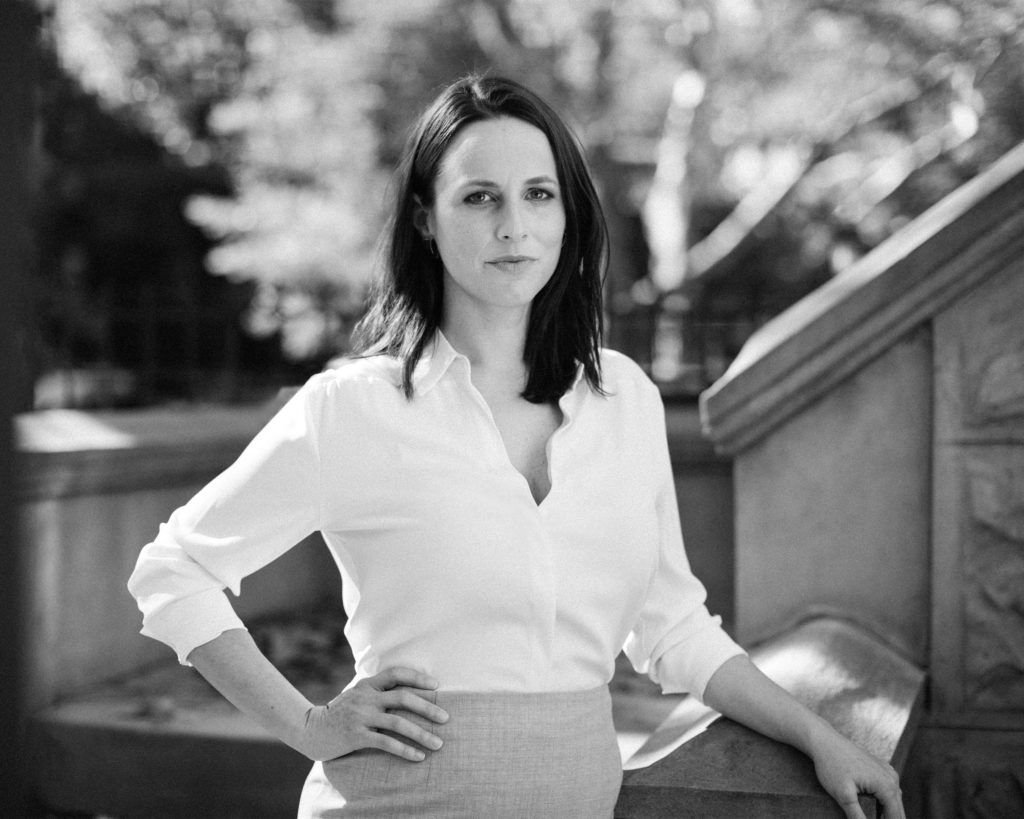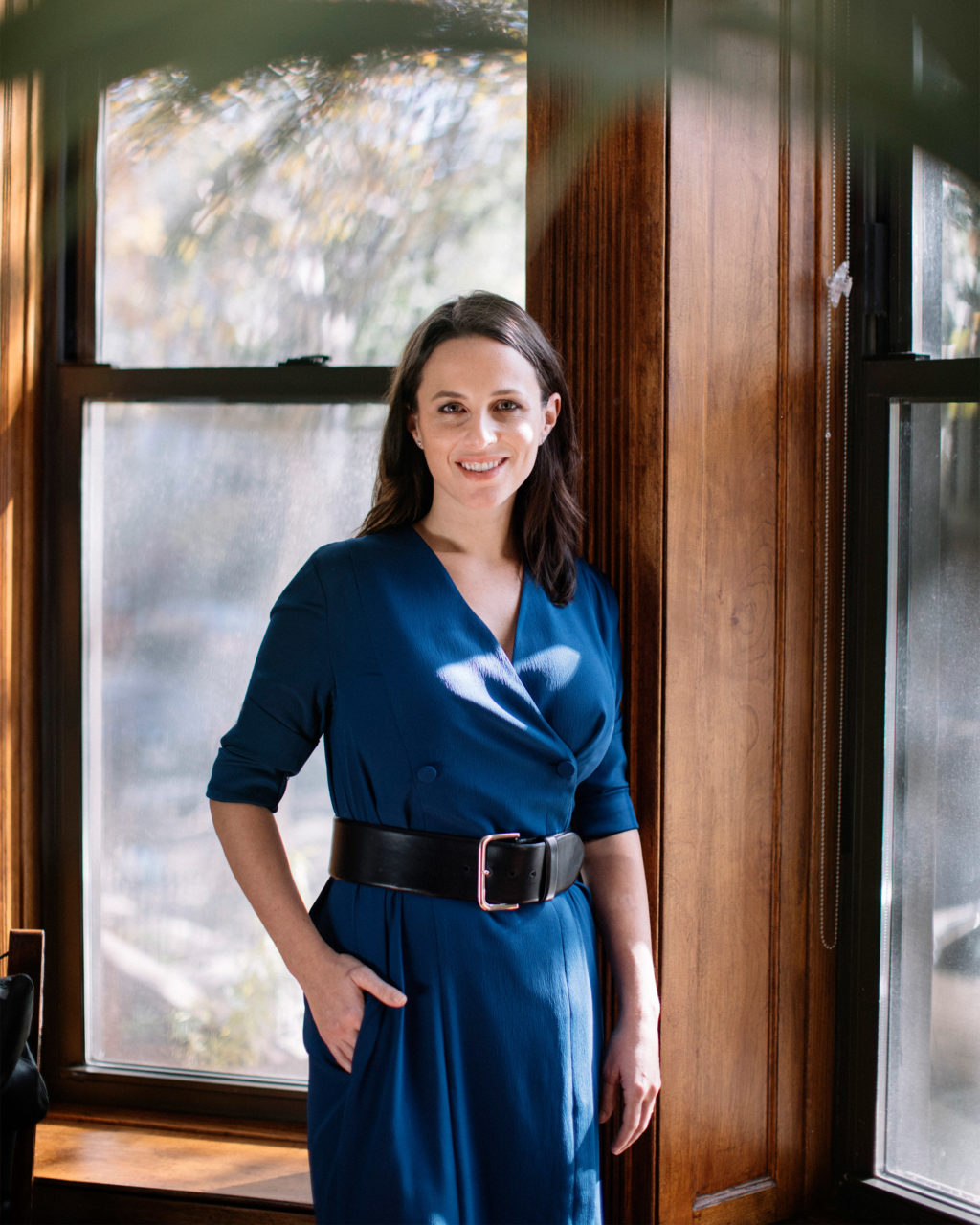Should You Care Less About Being Likeable?
December 06, 2019 | Filed in: Woman of the Week
In the past four months, journalist Alicia Menendez has published her first book, started a new job as an on-air host at MSNBC, and had her second baby. You’d think that worrying about her own “likeability” would be the last thing on her mind. Instead, she’s learned to embrace the fact that she cares about what people think of her (contrary to popular advice given to many ambitious women). Her desire to be likeable—but not too likeable—is the subject of her aforementioned book, The Likeability Trap. Here, Alicia talks about learning to say no, getting comfortable with being messy, and the difference between constructive feedback and unhelpful criticism.
MY BOOK WAS SUPPOSED TO BE ABOUT MY PERSONAL QUEST to let go of wanting to be liked. I care very much about my own likeability, and I wanted to learn how to care less. So I started out by identifying women to interview about this topic—ambitious women who strive to lead and have had to, in some cases, sacrifice their likeability to do so. I went into those interviews wanting to hear how they did that, and assuming that they were better at letting go of their likeability than I was. And I ended up hearing something very different. Most of these women fell into two camps: There were women who cared about their likeability and were paying an internal, emotional price for it, and there were women who didn’t care and were contending with pushback for it. And that’s when I realized that letting go of likeability felt like another thing on the endless to-do list of female self-improvement. Like, “I’ve got to floss, use eye cream, and learn to let go of wanting to be liked.”

Alicia wears the Gosia dress, the Beebe belt, and the Bezel earrings.
ONCE I REALIZED THAT LIKEABILITY WAS MUCH MORE COMPLICATED than I originally thought, I decided to switch gears with my book. It would have been easy to plow ahead and stick with my first thesis, but I believe that if you really listen to people and sit with the nuance of what they say, that’s where you find the best stories.
MOST OF US WILL DO WHAT WE HAVE TO in order to survive or thrive in our specific work environments, myself included. But if we really want to adjust our relationship to likeability, it’s not as simple as setting individual boundaries. It’s about contending with the notions we have of who gets to lead and why. Since I started the book, I’ve realized that my relationship with success and likeability is not just an individual challenge that I’ve had to navigate. I now see them as a systemic issue.
Want more M.M.? Sign up for our newsletter.
MOST OF US HAVE AN EXPECTATION THAT WOMEN are communally minded and do what’s best for everyone. So if a woman has ambition and strives for success, people often perceive it as a power grab, and they find her less likeable. They might even think there’s something wrong with her. Over the past two decades, a lot of workplace advice for women has focused on how to soften yourself in the interest of survival. We’re taught to temper the expression of our own ambition so that we can get what we want without facing a likeability penalty. And as an ambitious person, I consumed all of that content and found myself in my mid-thirties wondering why it all seemed so hard and if I was doing something wrong. The advice seemed to say that if I just executed it properly, then I would be able to make my way through all these booby traps. But the advice never acknowledged that the whole playing field was electrified.

Alicia wears the Lagarde shirt and the Cobble Hill skirt.
WE ALL DO SOME TYPE OF PERFORMANCE. Once I understood and accepted that, I realized that it was important to look at what kind of performance I wanted to do. If I’m spending 40 to 60 hours a week doing a necessary performance of myself, wouldn’t I want that performance to feel as authentic and natural as possible? That idea taught me that I needed to focus on work relationships where I felt most encouraged to show up as myself.
IN MY 20s, I WAS SO EAGER TO FIT IN at work that I was willing to take all feedback as gospel, and I spent a lot of my time trying to accommodate other people’s expectations of what I should want or how I should act. Looking back, I now see that most of the feedback was critical and stylistic. I actually had a choice about whether or not I wanted to accept and incorporate it into my work.
WANTING TO BE WELL-LIKED IS DIFFERENT FROM PEOPLE-PLEASING. Much of the difference between the two comes down to negotiating when to say no. I’m learning to do it, but it’s still very hard. For example, a few months ago, I got asked to be on a panel at a big conference at the very last minute. Part of me said, “If I say no to this, I may rub people the wrong way, and I may never be asked to do this again.” But it just didn’t work for me to be on this panel. The conference wasn’t offering compensation, and I would have to secure childcare to be there. So I said no, and I said it without apology. And they understood. Afterwards, I didn’t ruminate about saying no the way I would have before. A couple of years ago, I would have wondered, “Oh, have I offended people? Have I burned a bridge? Can I come back from this?” All of those questions take up a lot of energy.

Alicia wears the Gosia dress, the Beebe belt, and the Bezel earrings.
NOW, I HAVE A SMALL CADRE OF TRUSTED PEOPLE who know me personally and professionally and who I can go to for feedback and gut checks. Having people I trust who can tell me, “Here’s how you could do that better,” or, “Yes, your instinct is right”—that’s incredibly important. They’ve taught me that sometimes, handling something correctly still produces an uncomfortable outcome, and that’s okay. It’s helped me differentiate between feedback I need to take and feedback that I can let go of. I think of this group as a human sieve.
ANOTHER WAY I’VE RE-THOUGHT MY RELATIONSHIP TO LIKEABILITY is to monitor my exposure to social media. I’ve removed some social media apps from my phone to cut off the constant feedback loop, and I try to limit my time spent on them so that I can be present in my real life as much as possible.
I AM A MOTHER OF TWO, and I was working several jobs as I wrote this book, so I am well-versed in the art of stolen time. If I was standing in line for five minutes at the grocery store, that was five minutes of thought, and I would use it to jot down a billion ideas in the Notes app on my phone. I didn’t have the luxury of being precious about sitting down with my laptop in a quiet, beautiful space or going on a writers’ retreat. I just took what I could get and made the most of it.

Alicia wears the Lagarde shirt, the Cobble Hill skirt, and the Velma earrings.
MY LIFE IS A LITTLE UPSIDE DOWN RIGHT NOW because I just started a new book and a new job, on top of launching this book. I also had a baby three months ago, so I’m in the nursing vortex. There’s a lot of pumping and schlepping milk around. It’s been interesting for me to learn how much you have to assert yourself if you are going to be a working mother who pumps, because it takes time to set up, time to pump, and time to put things away. It’s much more laborious than I realized, and you have to tell other people that you need 30 minutes, multiple times a day, to take care of this thing that is a priority to you.
WE’RE MOSTLY FLYING BY THE SEAT OF OUR PANTS. I used to read these profiles of professional women, and I’d be like, “Oh. Clearly if you just apply this methodology, everything can be neat and tidy.” Maybe some people can do that, but I have had to become comfortable with the mess. Our home is not tidy. We’re all just trying to get in and out and do the best we can, and that’s okay. I’m definitely not as good of a friend as I once aspired to be, or as I once defined one. I used to be that friend who would check in and send thoughtful gifts. Now I’ve boiled it down to, “I will be there when you need me, but that’s the capacity I have at this moment in my life.” Luckily, I have a husband who is a really good partner and tries to share that mental load of remembering when things need to be signed up for and when the diapers need to be reordered and all of that invisible work.

Alicia wears the Gosia dress, the Beebe belt, and the Bezel earrings.
MY ONLY TRICK IS THAT I ALWAYS TRY TO PREPARE for the next day as much as I can before I go to bed. The mornings are always unmitigated chaos, so anything that can be done the night before gets done the night before. My three-year-old’s lunch gets packed and all my pump parts get cleaned and put away. The coffee maker gets set. My clothes get laid out.
RIGHT NOW, GETTING DRESSED FOR WORK is mostly a question of, “Does this fit, and how easily can I pump in this in the middle of the day?” And, “Does it have spit up on it?” When I’m going on air, I always want to wear something that is simple and effortless and makes me feel strong and powerful. A lot of that goes back to comfort. If I am comfortable in what I’m wearing, then I feel like myself. Once I decide to put it on, that should be the last time I think about what I’m wearing for the rest of the day. It needs to be a one-moment decision. For the longest time, there was a “TV lady” look that was just fitted, jewel-toned sheaths. And thankfully, there’s some movement away from that now, or at least some flexibility. Clearly, not all of us are walking around in our real lives wearing fitted, jewel-tone sheaths.
Want to nominate a Woman of the Week? Email us at womanoftheweek@mmlafleur.com.
Photos by: Rich Gilligan
Styling by: Nyjerah Cunningham, assisted by Ismelka Gomez.





